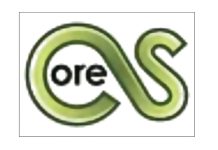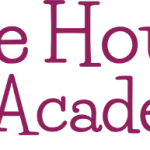by: Lon Woodbury
The year 2007 might wind up being a pivotal year for the network of private residential parent-choice schools and programs for struggling teens. We might have just gone through a paradigm shift in the environment we work in several areas. It is unclear at the present whether the changes might be good or bad for the needs of the children.
The main change is the visibility of the network. For years we operated “under the radar,” partly due to the inability of the media and state regulatory agencies to fit the wide variety of approaches in our network into neat simple categories, and partly because of the relatively small size of this network. (Under The Radar) (Estimates are our private pay residential network brings in about $2 billion nationally, which as a comparison is not much more than the total public school spending in Idaho alone). We have gradually become more visible in recent years, but with the October 10, 2007, hearings by Congressman George Miller, we became a national story and are an object for possible federal national policy. The media and public scrutiny will only be increasing.
There are several distinguishing characteristics of the schools and programs in this network that in the past have made it different from traditional residential mental health, substance abuse, hospitals, Social Service and Law Enforcement programs. Those elements include private parent-choice, small student bodies, relatively easy entry for new programs, use of alternative education concepts, use of wilderness, personal relationships between staff and students and a strong influence from therapeutic community concepts (structure). It is these elements that make this network of schools, programs and consultants different from traditional programs for troubled teens.
Corporations and moneyed interests have discovered this struggling teen network and have become major players, well on their way to perhaps dominating the network. This is significant because one of the original distinguishing characteristics of this network was that most schools and programs had their origins as small startups with modest capitalization. However, as demands increased for credentialed clinicians and as state regulatory requirements have increased their focus on these schools and programs, deep pockets for start ups are becoming more frequent. The increased importance of deep pockets might be the reason I’ve been hearing reports from around the country that new programs based on the old pattern of one or a few visionaries developing funding are less common, and that more start-ups are funded by deep pocket corporations. This trend might even have accelerated in 2007.
The requirement for credentialed clinicians in schools and programs has become almost universal in all but the smallest family style schools and programs. This is a significant evolution because this network started as an alternative or “protest” to the mental health and hospital chains of the 1970s where expensive treatment was widely available, delivered as an impersonal service (diagnose and treat formula, commonly referred to as the Medical Model). If the clinicians working in this network accept the value of personal relationships with students and reject impersonal managed care type thinking, then this evolution can help improve the quality of services.
Finder’s Fees (cash for kids) are an increasing phenomenon in schools and programs outside the National Association of Therapeutic Schools and Programs (NATSAP) and the Independent Educational Consultants Association (IECA), the two major professional standards organizations relating to this industry. Both organizations have strong statements against accepting fees for placement considering that as unethical and contrary to the best interests of the children. Finder’s Fees, however, are fueled by parents thinking they are getting free advice (which sometimes ends up being the most expensive) that they often don’t understand they will pay either directly or in some hidden manner. However, this type of Finder’s Fees arrangement seems to becoming more common, and there are increasing rumors that even some members of NATSAP and IECA are participating in this practice in order to increase their business. Unless there is an effective campaign to explain to the public and parents the implications, we could be sliding into a commonly accepted view that virtually everybody markets this way. In the 1970s, this was an almost universal marketing tool of consultants referring to boarding schools, and IECA was originally organized to fight this marketing scheme, seeing it as unethical and that the needs of the students were being lost to a priority of cash flow. In 2007, we seem to have moved one more step back to the 1970s view.
Whether this past year was a pivotal point or just another year with the usual amount of change will not become clear for some time. However, it has been an interesting year and we can only hope that it has been one where more kids are getting better services than before.








